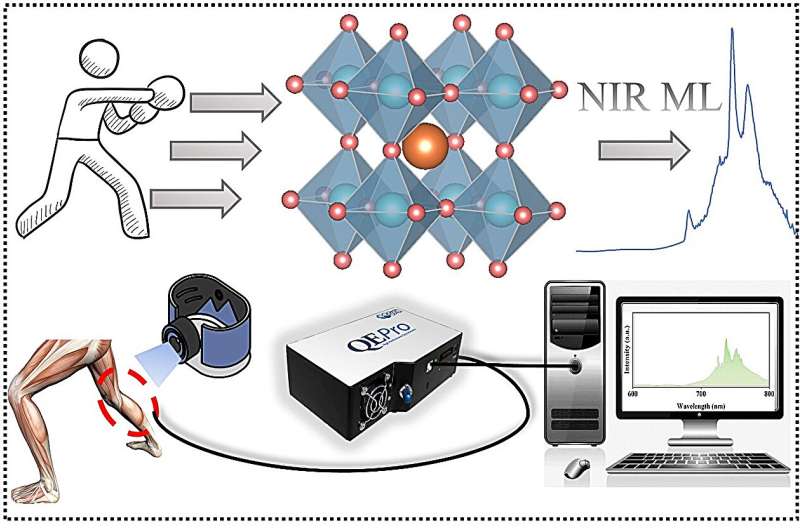This article has been reviewed according to Science X's editorial process and policies. Editors have highlighted the following attributes while ensuring the content's credibility:
fact-checked
proofread
Uncovering self-recoverable NIR mechanoluminescence from Cr³⁺ doped perovskite type aluminate

Mechanoluminescence (ML) located within the near infrared (NIR) spectral range may hold promising applications in in-situ and real-time biomechanical imaging. This is due to the better spatial resolution and penetration depth of the biological tissues, lower optical loss, and the avoidance of autofluorescence.
Historically, rare earth ions have been predominantly employed as activators in ML materials. However, adjusting the emissions of rare earth ions, especially RE3+, poses challenges, thereby limiting the practical application of NIR MLs. Therefore, more and more researchers have favored the transition metal ions activated systems.
Previously, Puxian Xiong and colleagues have reported a self-recoverable NIR ML material in gallate by using Cr3+ ions as the emission center for the first time.
"Indeed, LiGa5O8:Cr3+ presents good ML repeatability and does not require a pre-irradiation process, but the intrinsic ML mechanisms are still not entirely clear," says Xiong. "In particular, whether the remanent carriers occupied lattice traps can affect the ML repeatability is unclear."
As is generally known, the preheating method is one of the most effective ways to remove the remanent carriers. In a new study published in Advanced Powder Materials, the team integrated the preheating method with corresponding ML results. "This work intends to actualize the analysis of the ML mechanism through eliminating the influences of stored carriers," says Xiong, who serves as co-corresponding author of the study.
In all, Cr3+ ions doped perovskite-type LaAlO3 ML phosphor is successfully synthesized by a traditional high-temperature solid-state reaction method in the air. Combined with photoluminescence, persistent luminescence, diffuse reflectance, and thermoluminescence characterizations, the inherent ML mechanism was discussed in detail by the authors.
"We observed that ML in LaAlO3: Cr3+ is self-recoverable, which is obviously different from the trap-controlled ML compounds (requiring UV light for pre-irradiation). Based on the preheating method and corresponding ML analysis, such self-recoverable ML depends more on the piezoelectricity of the non-centrosymmetric LaAlO3: Cr3+," says Xiong.
Under mechanical stimuli, a strong piezoelectric field is built within the compound, which is large enough to generate electronically excited states of the Cr3+ ions, subsequently resulting in ML. This luminescence is featured with self-recoverability, implying that the compound can be applied to different applications.
"We further demonstrated great potential application prospects for the ML Bioimaging, anti-counterfeiting, and information encryption field with the encoding and decoding of ASCII code," adds Xiong.
More information: Peishan Shao et al, Self-recoverable NIR mechanoluminescence from Cr3+ doped perovskite type aluminate, Advanced Powder Materials (2023). DOI: 10.1016/j.apmate.2023.100165
Provided by KeAi Communications Co.


















